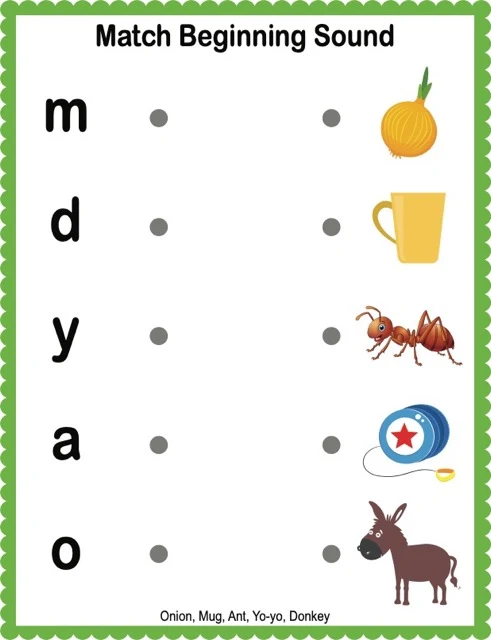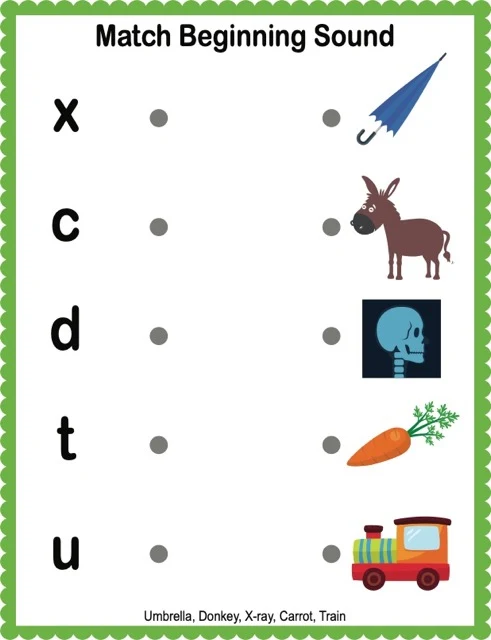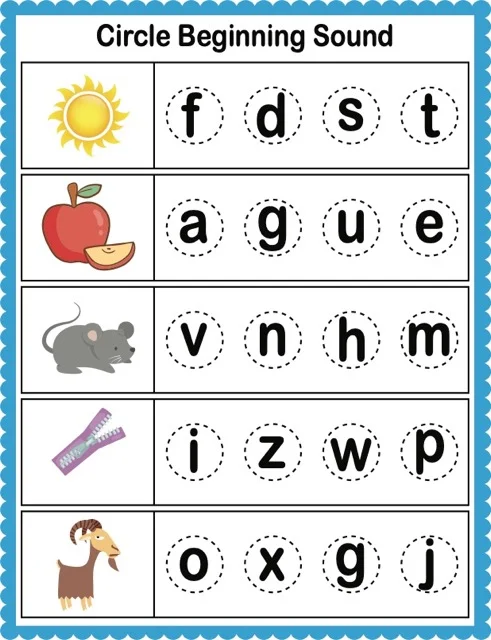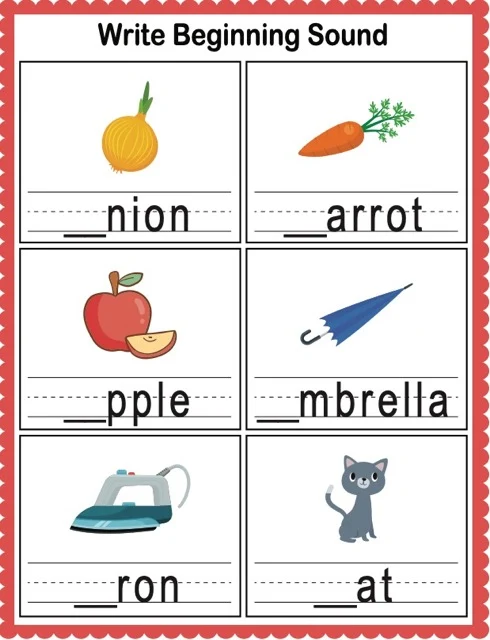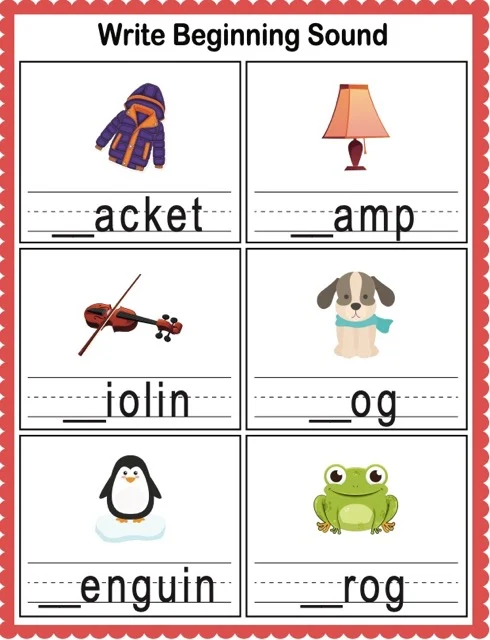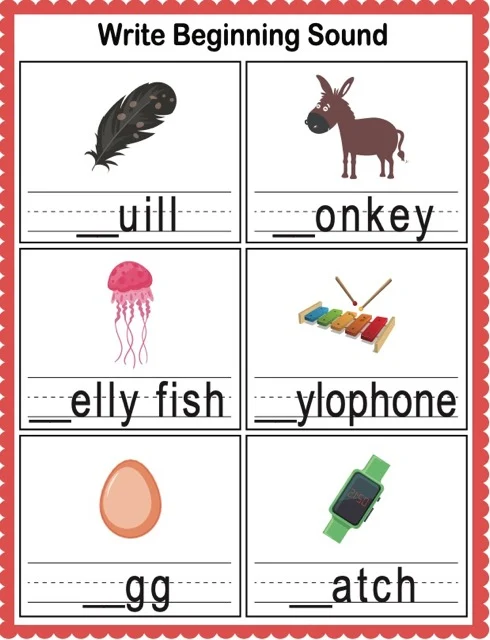Beginning Sound Awareness in Early Literacy
This briefing document and supporting materials explore the vital role of beginning sound awareness in early literacy development. They emphasize phonological awareness—the ability to manipulate sounds—as foundational to reading success, detailing effective teaching methods such as games, visual aids, and songs. The resources highlight the crucial sound-letter correspondence and offer examples of common beginning sounds. Challenges in mastering beginning sounds are acknowledged, along with suggested strategies for support. Finally, the document suggests areas for further research, focusing on assessment and connections to broader language development.
Beginning Sounds and Literacy Development
Briefing Doc: Beginning Sounds and Literacy Development
Theme: This briefing doc examines the crucial role of beginning sound awareness in early childhood literacy development.
Sources:
●
"Beginning Sounds Mastery Guide" (Quiz & Answer Key, Essay Questions, Glossary)
●
"Beginning Sounds: A Parent's Guide" (FAQ)
●
"Testing Theme: Beginning Sounds.pdf" (Image List)
Key Ideas:
1.
Phonological Awareness as a Foundation: Both sources emphasize the importance of phonological awareness – the ability to hear and manipulate sounds in spoken language – as a strong predictor of reading success. "Beginning Sounds Mastery Guide" defines it as:
"The ability to hear and manipulate the sounds in spoken language."
1.
Beginning Sounds and Literacy: Mastering beginning sounds is a key component of phonological awareness. Identifying and manipulating these sounds lays the groundwork for decoding skills, crucial for reading and writing.
2.
Methods and Activities for Teaching: Both sources highlight various effective methods for teaching beginning sounds:
○
"I Spy": Engaging children in playful sound identification.
○
Sorting Objects: Categorizing objects by beginning sound promotes hands-on learning.
○
Picture Cards and Real Objects: Visual aids help connect sounds to concrete representations.
○
Songs and Rhymes: Using music and rhythm can make learning enjoyable and memorable.
3.
Sound-Letter Correspondence: The sources stress the relationship between sounds (phonemes) and the written symbols that represent them (graphemes).
4.
Examples of Common Beginning Sounds: The "Parent's Guide" provides lists of words for several common beginning sounds: /s/, /c/, /j/, /u/, and /k/. These lists serve as practical examples for parents and educators.
5.
Challenges and Strategies: The "Mastery Guide" acknowledges that some children may struggle with beginning sounds and encourages patience and the use of multi-sensory techniques to support learning.
Image List Analysis ("Testing Theme: Beginning Sounds.pdf"):
●
The images (Snake, Carrot, Jellyfish, Umbrella, Kangaroo) likely represent a set of visual aids for teaching beginning sounds.
●
Each image corresponds to a distinct beginning sound: /s/, /c/, /j/, /u/, /k/.
●
These images can be used in various activities like sorting, matching, or creating stories based on the beginning sounds.
Implications for Practice:
●
Early childhood educators and parents should prioritize activities that develop phonological awareness, particularly beginning sound recognition.
●
A variety of teaching methods should be employed to cater to different learning styles.
●
Consistent practice, positive reinforcement, and the use of engaging materials can enhance learning and make the process enjoyable for children.
Further Research:
●
Investigate best practices for assessing beginning sound knowledge in young learners.
●
Explore the connections between beginning sound mastery and other areas of language development.
●
Research strategies for supporting children with specific challenges in phonological awareness.
Beginning Sounds: A Parent's Guide
FAQ: Beginning Sounds
1. What is a beginning sound?
A beginning sound is the first sound you hear when you say a word. For example, the beginning sound of the word "cat" is /c/.
2. Why are beginning sounds important?
Beginning sounds are important for developing phonological awareness, which is the ability to hear and manipulate the sounds in spoken language. Phonological awareness is a strong predictor of reading success.
3. How can I help my child learn beginning sounds?
You can help your child learn beginning sounds by playing games and activities that focus on identifying and manipulating sounds. For example, you can play "I Spy" with beginning sounds, or you can have your child sort objects by their beginning sound.
4. What are some common beginning sounds?
Some common beginning sounds include /s/, /c/, /j/, /u/, and /k/. These sounds are represented by the letters S, C, J, U, and K.
5. What are some words that start with the /s/ sound?
Some words that start with the /s/ sound include:
●
snake
●
sun
●
sock
●
sing
●
sad
6. What are some words that start with the /k/ sound?
Some words that start with the /k/ sound include:
●
kangaroo
●
kite
●
cat
●
key
●
king
7. What are some words that start with the /j/ sound?
Some words that start with the /j/ sound include:
●
jellyfish
●
jump
●
juice
●
joke
●
jungle
8. How can I make learning beginning sounds fun?
Learning beginning sounds can be fun! You can use songs, rhymes, and games to make it engaging for your child. You can also use real objects or pictures to help your child visualize the words.
Beginning Sounds Mastery Guide
Beginning Sounds Mastery Guide
Short-Answer Quiz
Instructions: Answer the following questions in 2-3 sentences each.
1.
What is phonological awareness and why is it important?
2.
Give three examples of activities that can help a child learn beginning sounds.
3.
Explain the difference between a letter and a sound.
4.
List three words that begin with the /u/ sound.
5.
What is the beginning sound in the word "king"?
6.
What is the beginning sound in the word "juice"?
7.
What letter represents the /k/ sound?
8.
What is the beginning sound in the word "sing"?
9.
Give two examples of words that begin with the /c/ sound that are NOT included in the provided source material.
10.
If a child is struggling to learn beginning sounds, what advice would you give to their parent?
Short-Answer Quiz Answer Key
1.
Phonological awareness is the ability to hear and manipulate the sounds in spoken language. It is important because it is a strong predictor of reading success.
2.
Activities to help learn beginning sounds: 1) Playing "I Spy" with beginning sounds. 2) Sorting objects by their beginning sound. 3) Reading books together and pointing out words that start with the same sound.
3.
A letter is a written symbol that represents a sound. A sound is a unit of spoken language that can be heard.
4.
Umbrella, under, up
5.
/k/
6.
/j/
7.
K
8.
/s/
9.
Examples could include: cookie, car.
10.
Be patient and keep practicing! Make learning fun by using songs, rhymes, and games. You can also use real objects or pictures to help your child visualize the words.
Essay Questions
1.
Discuss the relationship between beginning sound knowledge and reading development. How does mastering beginning sounds contribute to literacy skills?
2.
Analyze the effectiveness of different methods for teaching beginning sounds. Compare and contrast approaches such as using picture cards, playing sound games, and incorporating real-life objects.
3.
Imagine you are creating a lesson plan for a kindergarten class to introduce the concept of beginning sounds. Describe the activities and materials you would use, ensuring to cater to diverse learning styles.
4.
Explain the concept of phoneme categorization and its role in developing beginning sound awareness. How can teachers and parents support children in recognizing and grouping similar sounds?
5.
Discuss the challenges that some children may face when learning beginning sounds. What strategies can be implemented to address these challenges and provide targeted support?
Glossary of Key Terms
Beginning Sound: The first sound you hear when you say a word.Phoneme: The smallest unit of sound in a language.Phonological Awareness: The ability to hear and manipulate the sounds in spoken language.Grapheme: A written symbol that represents a sound, such as a letter or a group of letters.Sound-Letter Correspondence: The relationship between a sound and the letter or letters that represent it.Blending: Combining individual sounds to form a word.Segmenting: Separating a word into its individual sounds.Manipulating: Changing or rearranging the sounds in a word.

